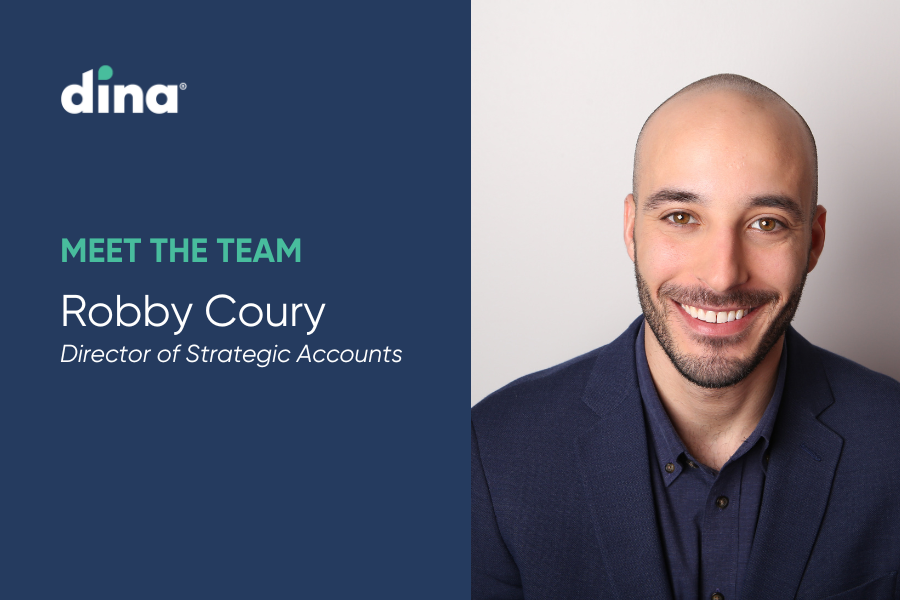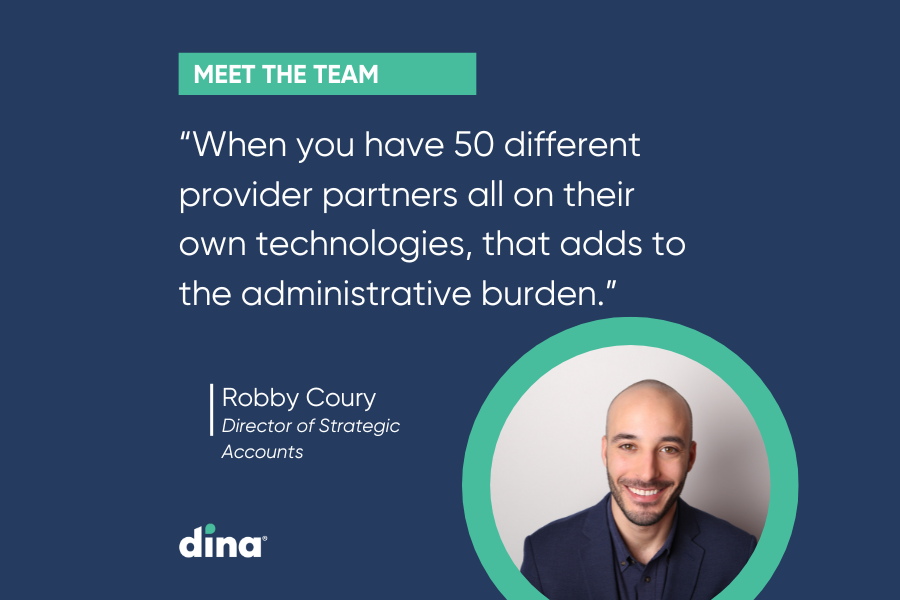
As more health plans prioritize the home as a primary site of care, they’ll also need to invest in the tools, services, and partners to build out that capability beyond traditional home care.
Personal care, meal delivery, home modification, and transportation are examples of the types of services many older adults and people with chronic conditions want – and need – to stay healthy at home.
“People are starting to think differently about what it means to be cared for and a lot of that includes addressing social determinants of health, especially for older individuals,” said Robby Coury, Dina’s director of strategic accounts. “There’s a demand from consumers to have access to more than just traditional health care.”
But coordinating in-home services is a challenge. We asked Robby how health plans can reduce those challenges, what it means for providers to be tech-enabled, and where he sees the industry moving. Keep reading for more.
Why is it difficult for health plans to coordinate non-medical services?
There are two core challenges that need to be solved. The first is the administrative burden associated with the actual coordination and activation of benefits. It’s a time-intensive process, and some organizations still rely on manual steps like emails and faxes to get information between the plan and its service providers.
Second, across the board, there is no unifying technology that connects the disparate service providers and health plans. When you have 50 different provider partners all on their own technologies, that adds to the administrative burden. The upside is that we do see vendors, providers, and plans acknowledge that technology needs to be part of their offerings.
And that’s where we can really play a role. There can be great technology on both ends, but if it’s not talking to each other in a meaningful way, and the connecting workflows aren’t efficient, it’s going to create additional manual steps to get the right level of visibility on both ends.
On the health plan side, this goes beyond the initial coordination moment – tracking and managing after the fact so that care coordinators are up to speed and can address any issues that may come up.
What’s the value to health plans?
Many older individuals require a higher level of coordinated care. And oftentimes, they need multiple services coordinated on their behalf. So a health plan navigator or care manager may have to arrange multiple services, like home infusion therapy along with home health and meal delivery. Pulling that together in one experience is hugely beneficial, not only for efficiency, but to make sure that no care gaps exist, or if gaps do exist, they can be closed quickly.
Not only does this have the potential to delight members, but we’ve also found that our partners often don’t need to add more people to scale. Especially for groups that are looking at expanding and entering new markets or geographies, they understand that technology is going to play a crucial part in that.
We’ve been lucky enough to go on that journey with several of our partners who have started small, but as they grew and entered new markets, they were confident that they had the right level of staffing to do so, and did not need to add coordinators to the team.
Who are some of Dina’s non-medical partners?
We’re excited about our partnership with Jukebox Health, a leader in the home modification space. They have OTs going into the home to do full assessments, which is really valuable to help make sure that the health plan, and even the member and family, understand where vulnerabilities may lie and proactively address those things to reduce the risk of an adverse event like a fall.
Tangelo, a newer meal delivery vendor, is taking a tech-forward approach by providing greater visibility into the holistic needs of members and tailoring specific meal programs based on dietary needs. Then, make sure that members know where their meals are in the stages of delivery and have visibility into that.
We also work with a number of national and regional non-medical home care agencies across the country.
What type of feedback do you get from customers?
One of the things we love to hear is that our end users love our technology. We see consistently high Net Promoter Scores across the board. That’s important because if you have a system or technology that folks don’t like using, they’re not going to use it and they’ll revert back to the phone or email or whatever they perceive as being easier.
We want to make sure that the people who are coordinating care on behalf of members have the tools they need to do that efficiently and engage with non-medical organizations in the same way they would a home health agency or a skilled nursing facility.
How do you see this evolving over time?
I think we’re going to get to a place where members will be able to self-navigate their benefits a lot easier. Health plans will always need to support a coordinator-led model for folks who require more touchpoints, or where the total cost of care is a concern. But for those able and interested, self-driven navigation is an exciting trend. It’s something that we, as a company, are constantly thinking about and something that consumers are demanding.
And so I see us playing a greater role in giving folks the tools to self-navigate in a way that’s straightforward, simple to understand, and ultimately easy to access. Because, at the end of the day, it really is a story about access—making sure that people, who on paper have access to benefits, in practice are actually able to easily turn those services on.
Members Expect Quick Activation of Behavioral Health Services. Does Your Plan Deliver?
In under 2 minutes, we’ll show you how easy it is to coordinate behavioral health and home-centered benefits to your members and quickly measure results.





